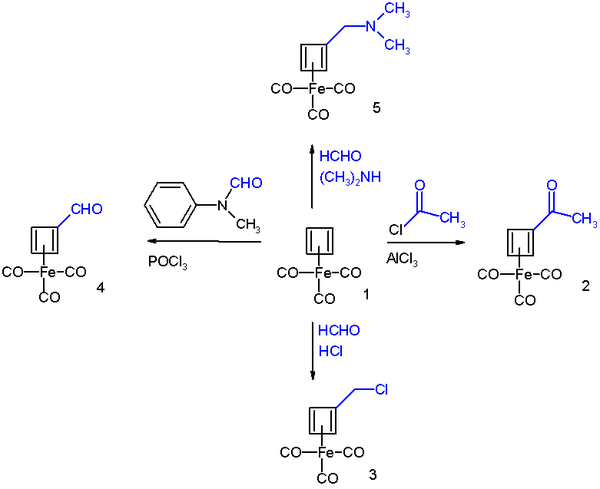 | |
| Identifiers | |
|---|---|
3D model (JSmol) | |
| ChemSpider | |
| |
| |
| Properties | |
| C7H4FeO3 | |
| Molar mass | 191.951 g·mol−1 |
| Appearance | pale yellow oil |
| Boiling point | 47 °C (117 °F; 320 K) 3 mm |
Except where otherwise noted, data are given for materials in their standard state (at 25 °C [77 °F], 100 kPa). | |
Cyclobutadieneiron tricarbonyl is an organoiron compound with the formula Fe(C4H4)(CO)3. It is a yellow oil that is soluble in organic solvents. It has been used in organic chemistry as a precursor for cyclobutadiene, which is an elusive species in the free state. [1]

